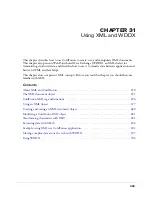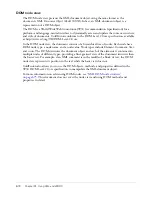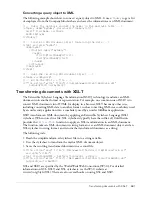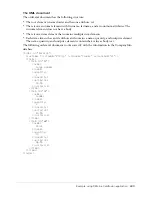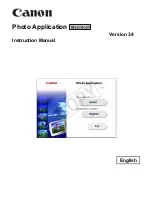
Modifying a ColdFusion XML object
683
Note:
Array and structure functions not in the preceding or table or the table in the next section,
do
not
work with XML document objects, XML elements, or XML node structures.
Treating elements with the same name as an array
In many cases an XML element has multiple children with the same name. For example, the
example document used in this chapter has multiple name elements in the employee elements. In
many cases, you can treat the child elements with identical names as an array. For example, to
reference the second name element in mydoc.employee, you can specify
mydoc.employee.name[2]. However, you can only use a limited set of Array functions when you
use this notation. The following table lists the array functions that are valid for such references.
XML document object management reference
The following tables provide a quick reference to the ways you can modify the contents of an
XML document object. The sections that follow describe in detail how to modify XML contents.
StructAppend
Appends a document fragment XML document object to another XML
document object.
StructInsert
Adds a new entry to an
XmlAttributes
structure.
StructUpdate
Sets or replaces the value of a document object property such as
XmlName
,
or of a specified attribute in an
XmlAttributes
structure.
Array function
Result
IsArray
(
elemPath.elemName
)
Always returns False.
ArrayClear
(
elemPath.elemName
)
Removes all the elements with name
elemName
from the
elemPath
element.
ArrayLen
(
elemPath.elemName
)
Returns the number of elements named
elemName
in the
elemPath
element.
ArrayDeleteAt
(
elemPath.elemName, n
)
Deletes the
n
th child named
elemlName
from the
elemPath
element.
ArrayIsEmpty
(
elemPath.elemName
)
Always Returns False.
ArrayToList
(
elemPath.elemName, n
)
Returns a comma separated list of all the
XmlText
properties of all the children of
elemPath
named
elemName
.
Function
Use
Summary of Contents for ColdFusion MX
Page 1: ...Developing ColdFusion MX Applications...
Page 22: ...22 Contents...
Page 38: ......
Page 52: ...52 Chapter 2 Elements of CFML...
Page 162: ......
Page 218: ...218 Chapter 10 Writing and Calling User Defined Functions...
Page 250: ...250 Chapter 11 Building and Using ColdFusion Components...
Page 264: ...264 Chapter 12 Building Custom CFXAPI Tags...
Page 266: ......
Page 314: ...314 Chapter 14 Handling Errors...
Page 344: ...344 Chapter 15 Using Persistent Data and Locking...
Page 349: ...About user security 349...
Page 357: ...Security scenarios 357...
Page 370: ...370 Chapter 16 Securing Applications...
Page 388: ...388 Chapter 17 Developing Globalized Applications...
Page 408: ...408 Chapter 18 Debugging and Troubleshooting Applications...
Page 410: ......
Page 426: ...426 Chapter 19 Introduction to Databases and SQL...
Page 476: ...476 Chapter 22 Using Query of Queries...
Page 534: ...534 Chapter 24 Building a Search Interface...
Page 556: ...556 Chapter 25 Using Verity Search Expressions...
Page 558: ......
Page 582: ...582 Chapter 26 Retrieving and Formatting Data...
Page 668: ......
Page 734: ...734 Chapter 32 Using Web Services...
Page 760: ...760 Chapter 33 Integrating J2EE and Java Elements in CFML Applications...
Page 786: ...786 Chapter 34 Integrating COM and CORBA Objects in CFML Applications...
Page 788: ......

